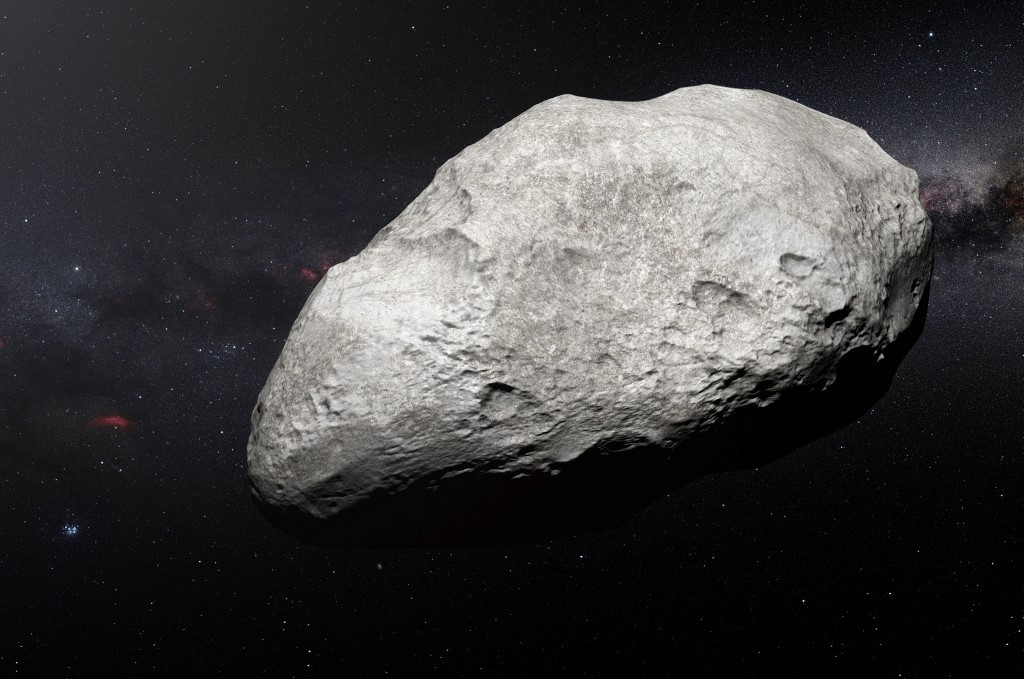Popular Reads
Top Results
Can't find what you're looking for?
View all search resultsPopular Reads
Top Results
Can't find what you're looking for?
View all search resultsSmall asteroid 'serendipitously' detected using James Webb telescope
The asteroid measuring between 300 and 650 feet (100 to 200 meters) in length is the smallest object observed to date using the telescope, the US space agency NASA said Monday.
Change text size
Gift Premium Articles
to Anyone
 This handout picture released by the European Southern Observatory (ESO) on May 8, 2018 shows an artist's impression of the exiled asteroid 2004 EW95, the first carbon-rich asteroid confirmed to exist in the Kuiper Belt and a relic of the primordial Solar System. This curious object likely formed in the asteroid belt between Mars and Jupiter and must have been transported billions of kilometres from its origin to its current home in the Kuiper Belt, according to the European Southern Observatory. (AFP/Handout)
This handout picture released by the European Southern Observatory (ESO) on May 8, 2018 shows an artist's impression of the exiled asteroid 2004 EW95, the first carbon-rich asteroid confirmed to exist in the Kuiper Belt and a relic of the primordial Solar System. This curious object likely formed in the asteroid belt between Mars and Jupiter and must have been transported billions of kilometres from its origin to its current home in the Kuiper Belt, according to the European Southern Observatory. (AFP/Handout)
E
uropean astronomers using the James Webb Space Telescope have detected a previously unknown asteroid about the size of Rome's Colosseum in the main asteroid belt between Mars and Jupiter.
The asteroid measuring between 300 and 650 feet (100 to 200 meters) in length is the smallest object observed to date using the telescope, the US space agency NASA said Monday.
The European astronomers "serendipitously detected" the asteroid, NASA said in a statement, adding that more observations would be needed to better characterize its nature and properties.
"We -– completely unexpectedly -– detected a small asteroid," said Thomas Muller, an astronomer at the Max Planck Institute for Extraterrestrial Physics in Germany.
It was detected during calibration of the telescope's Mid-InfraRed Instrument (MIRI), which operates in mid-infrared wavelengths.
"Webb's incredible sensitivity made it possible to see this roughly 100-meter object at a distance of more than 100 million kilometers," Muller said.
Webb, which has been operational since July, is the most powerful space telescope ever built and has unleashed a raft of unprecedented data as well as stunning images.
One of the main goals for the $10 billion telescope is to study the life cycle of stars. Another main research focus is on exoplanets, planets outside Earth's solar system.
Webb was not designed to look for small objects such as the newly-discovered asteroid, but Muller said its discovery "suggests that many new objects will be detected with this instrument."










